This newsletter includes:
- Update on our work during the sunny, autumnal October days
- Monarch-hosting milkweed, know how to distinguish them
- Other insects that love milkweed
- New Pinhey Sand Dunes executives
Working under October’s Blue Skies and Russet Leaves
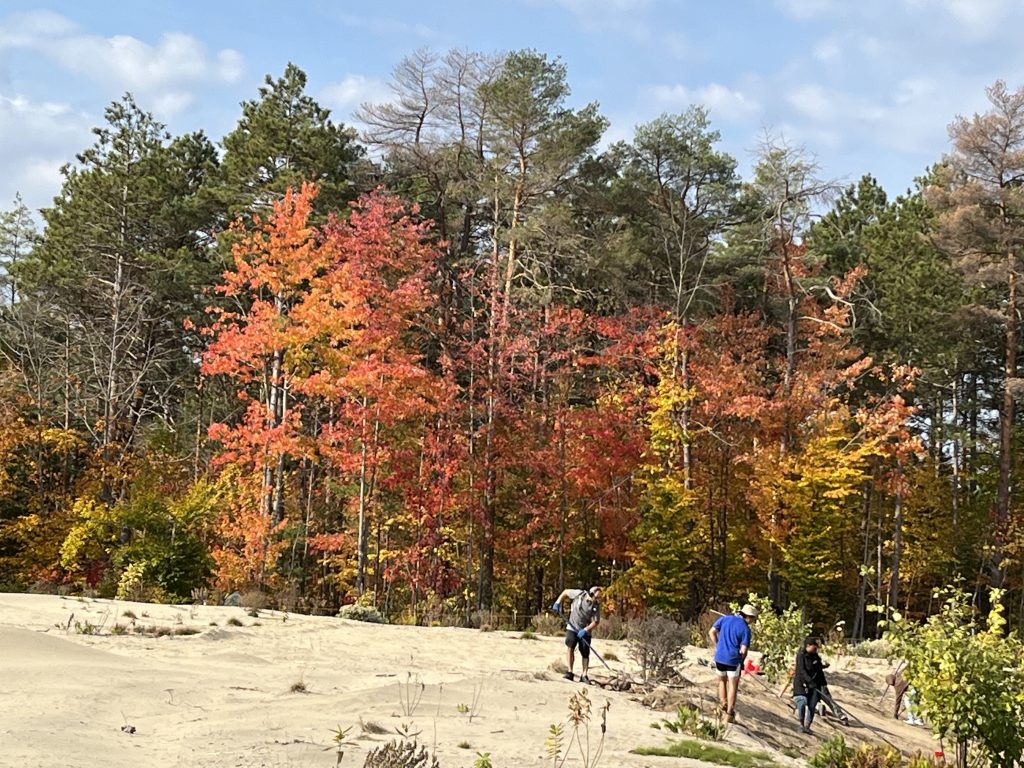
Blue skies lasted well into October, meaning we could continue working hard at the dunes under the gorgeous fall colors of the surrounding forest.
Over on Dune #1, huge progress has been made removing piles of debris left by the National Capital Commission (NCC) cleanup, sifting sand, and clearing fallen leaves and pine needles. We are starting to drag some of that clean sand to raise the newly exposed hill by around 2 feet. The goal is to reestablish the natural elevation gradients that will enable windflow and natural sand movement over the site.
Meanwhile, near the entrance to Dune #2, two volunteer teams were pulling up large roots in the NCC-cleared area and dragging up sand to create a hilltop ridge that will prevent water from running downhill into the new valley, instead channeling it across the dune.
The purple asters are the only flowers still in bloom and still attracting lots of activity from bees, wasps, and moths. With other blooms having died off, some seed collection has started, particularly for the Spotted Beebalm and the Black-eyed Susans that proliferate at the dunes. Otherwise, we are pulling out small grass seedlings and trimming seed heads from larger grasses to prevent excessive self-seeding.
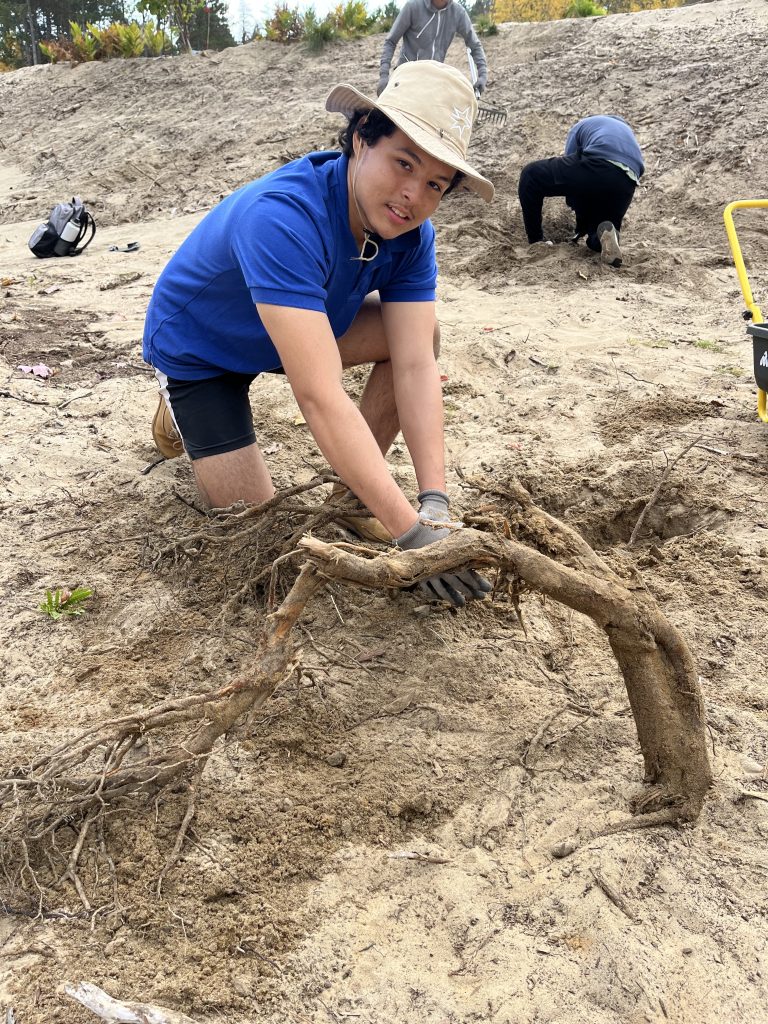
We are always trying to find out more about the dunes. New BCI Vice-Chair Frank Moore took a soil sample from one of the moss-covered hills for analysis by a soil scientist. He found out that there was quartz, some Biotite, Magnatite and other minerals, and we are awaiting more detail. Meanwhile, some research by one of the Carleton University students who came to Dune #2 recently showed larger numbers of small round tiger beetle larvae than the larger crescent-shaped burrows, and found more burrows in the clean loose sand and in sunny areas. The university has been coming annually in recent years and intends to come in the future too.
Upcoming: The last formal volunteering day at the dunes is Sunday, November 15. Keep an eye on the Biodiversity Conservancy International website, Facebook or Instagram for details of official dune volunteer activities from around April 2026.
Upcoming: We will be calling for volunteers to help “seed sitting” of small newly-propagated plants over the coming spring and summer for planting in the fall of 2026.
Know Your Pinhey Sand Dunes Milkweed
By Kate-Lynn McGowan
Milkweed (Asclepias) is a native wildflower plant native to North America wildflower that is both beautiful and important. We grow several species at the Pinhey Sand Dunes.
Monarchs need milkweed
and Milkweed plays a vital role in the life cycle of the Monarch Butterfly (Danaus plexippus), which is now listed as an endangered species under Canada’s Species at Risk Act.
Adult Monarch Butterflies only lay eggs on Milkweed because and their Monarch cCaterpillars can only eat Milkweed leaves. While Milkweed sap is also toxic to many species, allowing Monarch caterpillars can safely eat it and store it. The toxin then makes Monarchs poisonous to many Butterflies to protect themselves from predators. Their bright orange colour serves as a warning to predators.
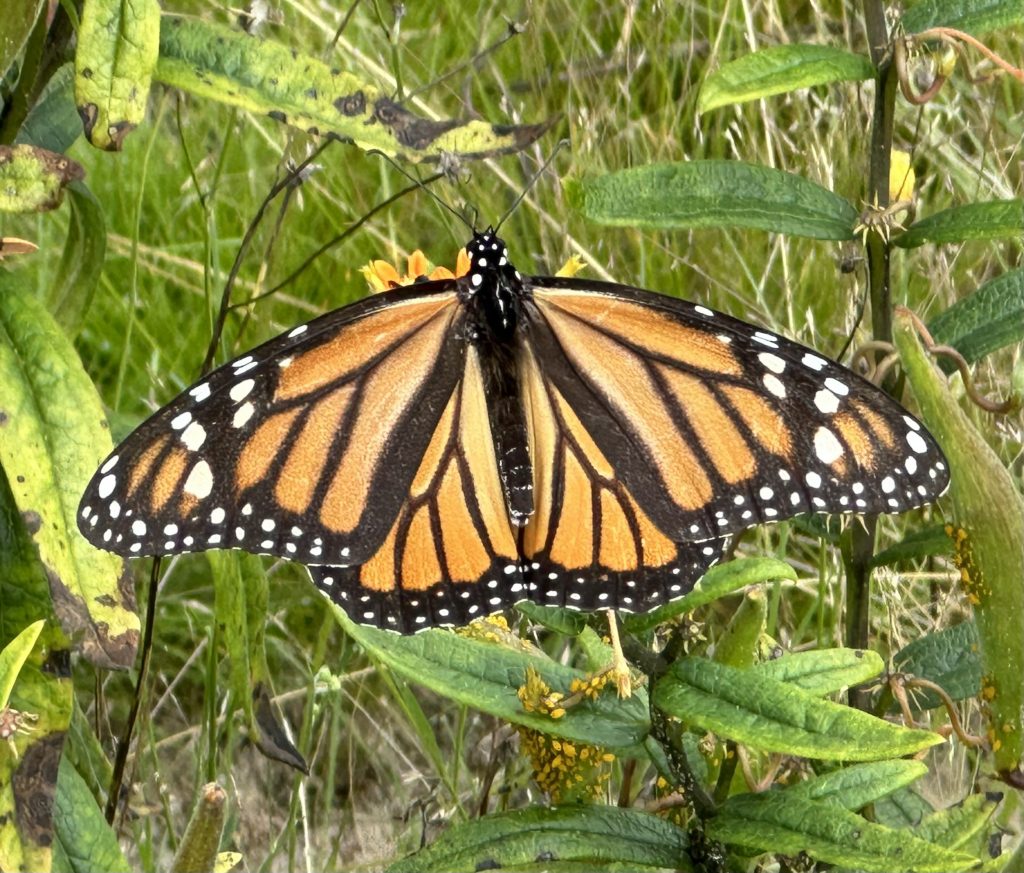
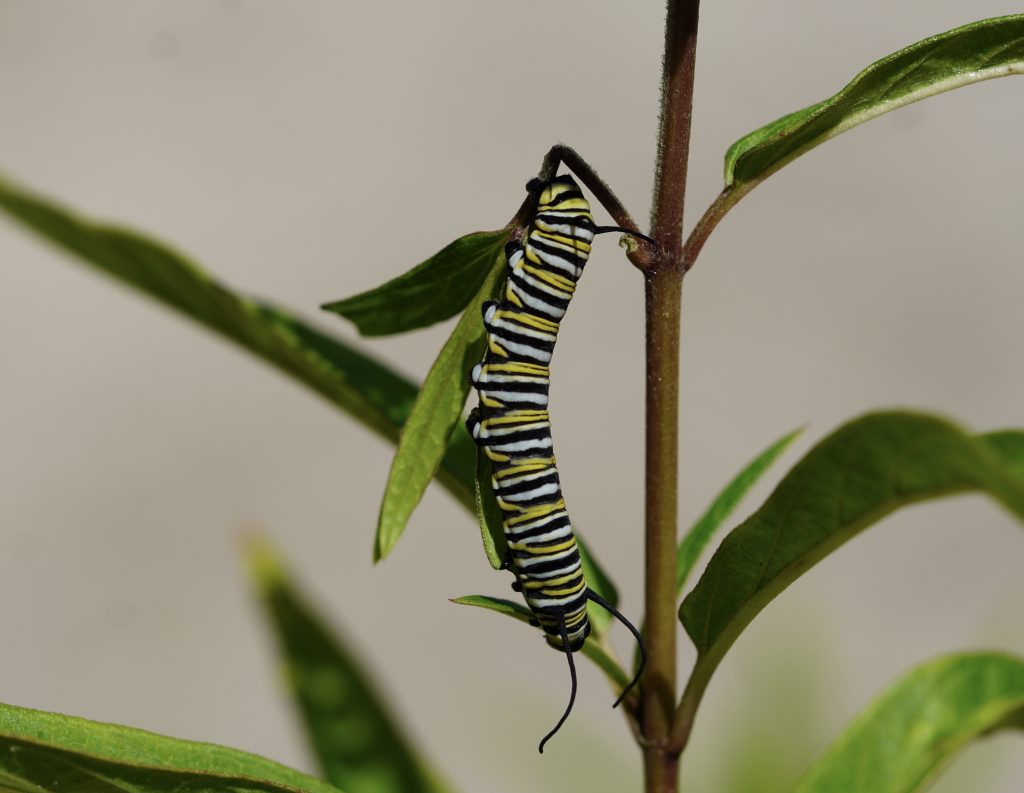
The Pinhey Sand Dunes are home to a high concentration of perennial Milkweed, particularly Common Milkweed and Butterfly Milkweed. These different types of Milkweed bloom throughout the spring, summer and fall, providing nectar crucial sustenance for the Monarch Butterfliesy throughout its early life all the way until its migration south.
Common Milkweed (Asclepias syriaca)
Common Milkweed is distinguished by its broad, long, dark green leaves which grow opposite one another. Since it spreads aggressively by its running roots, there are several large patches at the dunes. It is a preferred host plant for the Monarch butterfly in early summer before the leaves become old and tough. When in bloom, the plant produces large clusters of fragrant pale pink to purple flowers. In late summer and early fall, these flowers yield plump, bumpy seed pods. When mature, the pods split open, allowing the seeds attached to fluffy parachutes to disperse in the wind. The best months to see Common Milkweed in bloom at the Pinhey Sand Dunes are from June to August.
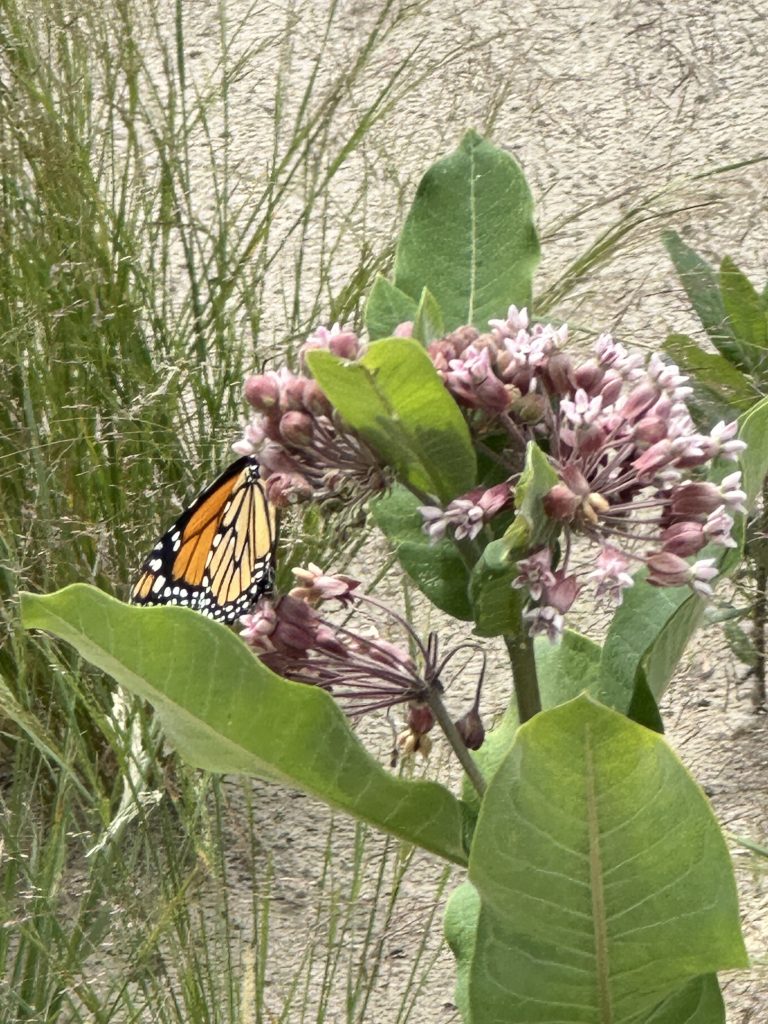
Butterfly Milkweed (Asclepias tuberosa)

Butterfly Milkweed is shorter than Common Milkweed and has narrow, dark green leaves. Blooming in late June and July, the plant typically produces bright orange flowers, although some plants may have pale orange or yellow flowers. Butterfly Milkweed plants have thick taproots, making them particularly drought-tolerant.
Swamp Milkweed (Asclepias incarnata)
Swamp Milkweed prefers more moisture than other species. At the Pinhey Sand Dunes, Swamp Milkweed has been planted in low-lying, mesic areas, and partly-shaded locations . Its long, thin, tender leaves make it a favourite hostplant of the Monarch butterfly, especially later in the summer when Common Milkweed is less appealing. When in bloom, the plant produces flat clusters of bright pink, reddish, or even white flowers.

Whorled Milkweed (Asclepias verticillata)
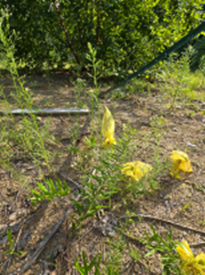
Whorled Milkweed is distinguished by its very narrow stem and thin, spiky leaves which grow in a spiral pattern. When in bloom, the plant produces clusters of small greenish-white flowers, but easily blends in among grasses when not in bloom. So far, there are few Whorled Milkweed at the Pinhey Sand Dunes.. Like other milkweed species, Whorled Milkweed generally blooms in the summer, and also produces pods of fluffy seeds.
Come to the Pinhey Sand Dunes in the summer to see these milkweeds blooming. You may also see Monarch butterflies drinking nectar from flowers and their caterpillars feeding on milkweed foliage.
Other Milkweed Specialist Insects
By Berit Erickson
Monarch caterpillars aren’t the only insects that specialize in eating milkweed. When you visit the Pinhey Sand Dunes, look closely at the milkweed plants to see what insects you can find.
Milkweed Tussock Moth caterpillar (Euchaetes eagle)
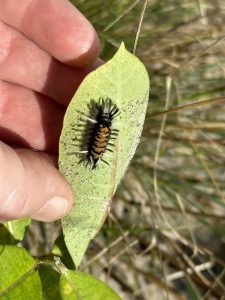
These bristly, colourful caterpillars only eat between veins in milkweed leaves to avoid the toxic sap. Interestingly, they prefer to eat tough, older leaves on Common Milkweed plants, while Monarch caterpillars prefer young, tender leaves.
Small Milkweed Bug (Lygaeus kalmii)
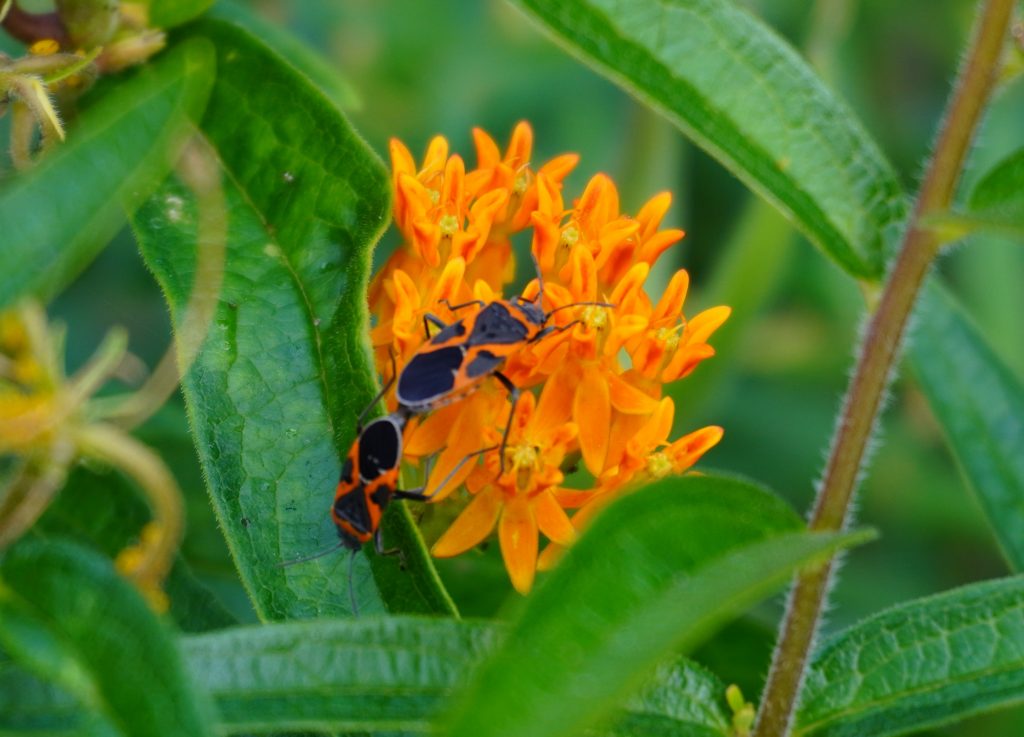
Small Milkweed Bugs primarily eat milkweed seeds and flower nectar, but they may also eat other insects.
Red Milkweed Beetle (Tetraopes tetrophthalmus)

Adult beetles eat milkweed leaves, buds and flowers, while their larvae eat milkweed roots.
Swamp Milkweed Beetle (Labidomera clivicollis)

As their name suggests, these beetles prefer to eat Swamp Milkweed leaves, but they may eat Common Milkweed and Butterflyweed foliage too.
Oleander Aphids (Aphis nerii) and ladybeetles (Harmonia sp.) that eat them

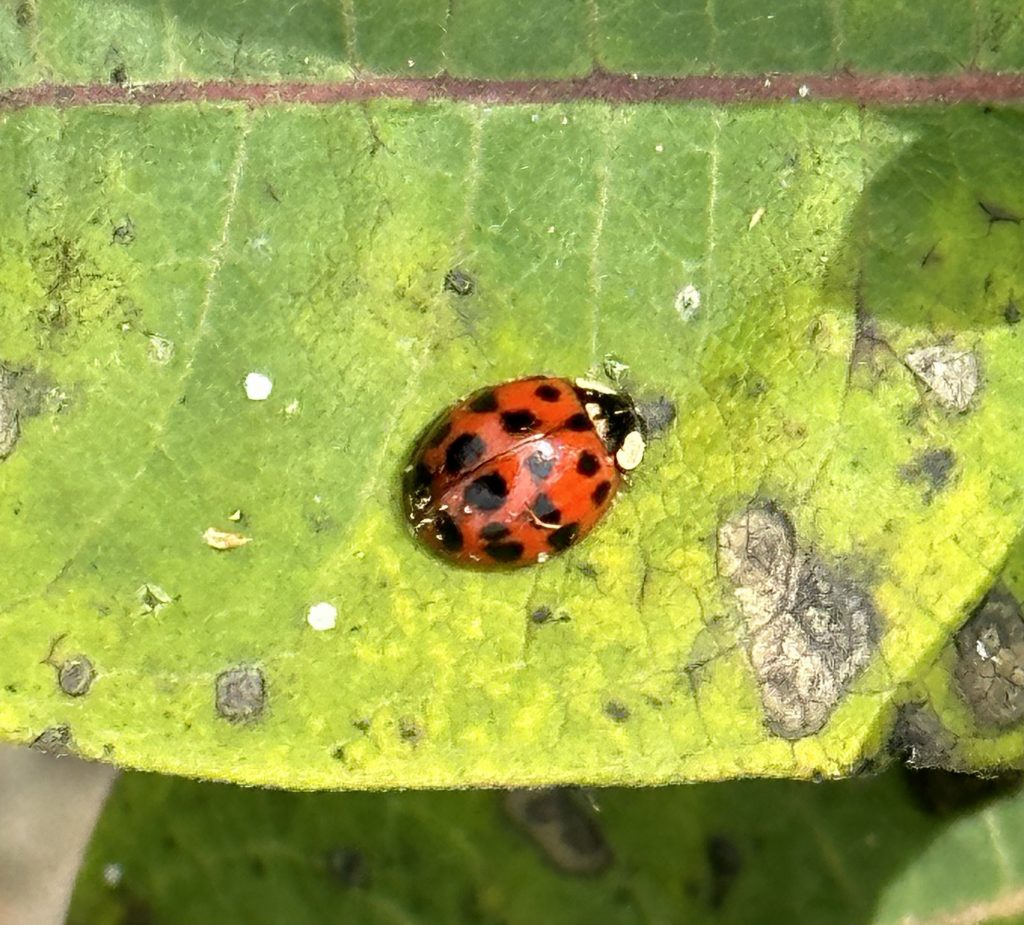
Milkweed at Dune 2.Photo by Berit Erickson
Oleander Aphids, from the Mediterranean, are now common in North America, and they often feed on milkweed. Where you find aphids, you’ll likely also find ladybeetles eating them.
Meet the New Executives at the Dunes
We have a host of volunteers taking up key positions to help the Pinhey Sand Dunes take its ecological and outreach work to the next level.
Frank Moore, Vice-chair Friends of Pnhey Sand Dunes
My background as a manager in my full-time work at a large grocery store chain and my role as a scout leader has taught me how to lead volunteers, while my BSc from Carleton University has given me the skills and background knowledge to help the Friends of Pinhey Sand Dunes Chair, Berit, and the BCI President, Pete as we look to develop the Pinhey Sand Dunes.
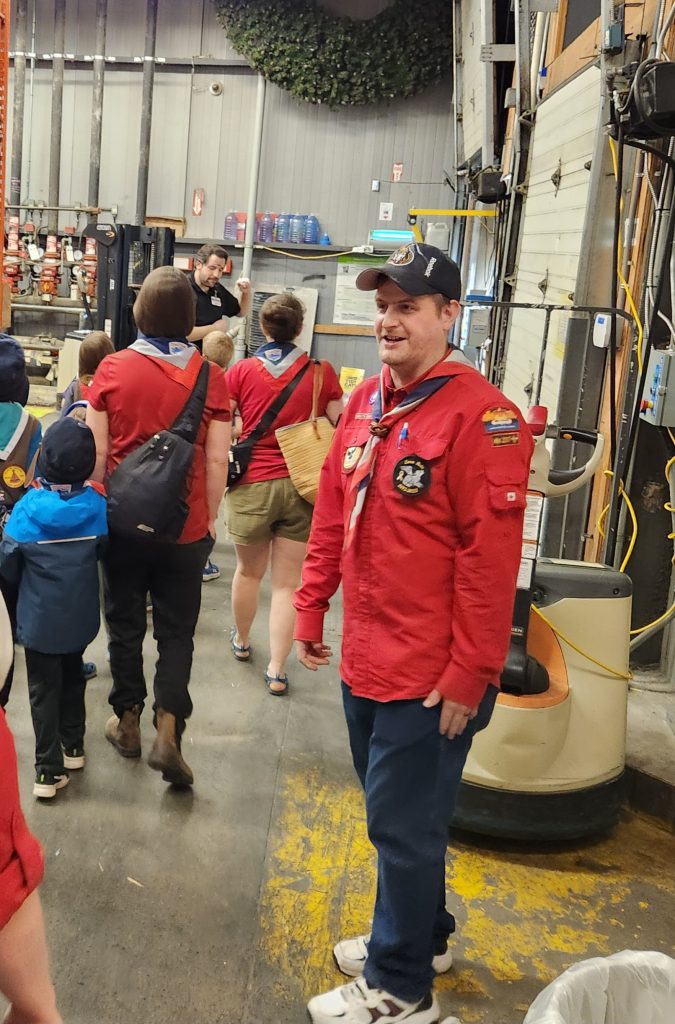

Steve Astels, Dune #2 Supervisor
I retired from the federal public service in the spring and since then have filled my time with volunteering. I spend Sunday mornings at the sand dunes working with the other volunteers, and am constantly amazed by the progress made during those few hours.
Veronica Pidchenko, Dune #2 Supervisor
I’ll be working alongside Steve and the others to help supervise volunteering and maintenance duties at Dune #2. My goal is for everyone to learn lots and have fun while we work to restore this amazing habitat.
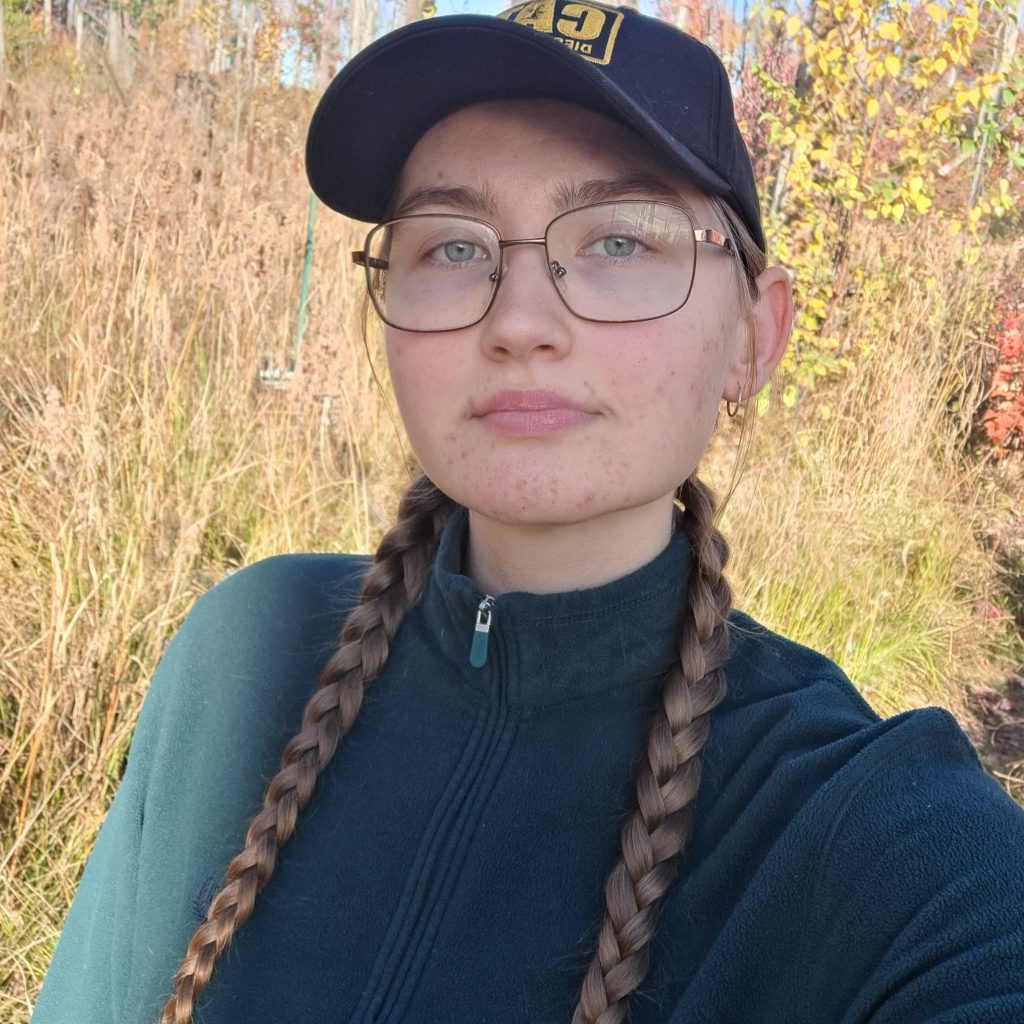

Hannah Martelle, Onsite Event Coordinator
I’m excited to be part of the work at the Pinhey Sand Dunes. I’m looking forward to learning more and getting involved with organizing events.
Laura Chapman, Off-Site Event Coordinator
I’ve always had a deep love for ecology, nurtured by my early days of skiing and hiking through Pinhey Forest. I was excited to learn about the ongoing efforts to restore the landscape to its original sand dune ecosystem. With a background in botany and entomology, I’m especially interested in exploring the unique plant and insect life that thrives in this environment.
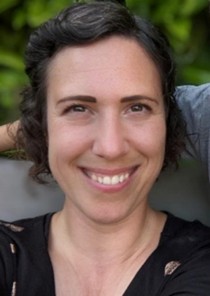

Madia O’Neill, Community Outreach and Publicity Coordinator
I am currently completing my undergraduate degree in Communications and English at the University of Ottawa. In my spare time I keep busy by having a few jobs, doing lots of reading, and spending time with family and friends. I can’t wait to jump into my new role and I look forward to connecting with many of you.
David Springgay, Videographer
I’ve spent the last 15 years working in user experience design. When I’m not in front of a computer, I enjoy spending time in the outdoors, exploring the world by foot, bicycle, or skis.

